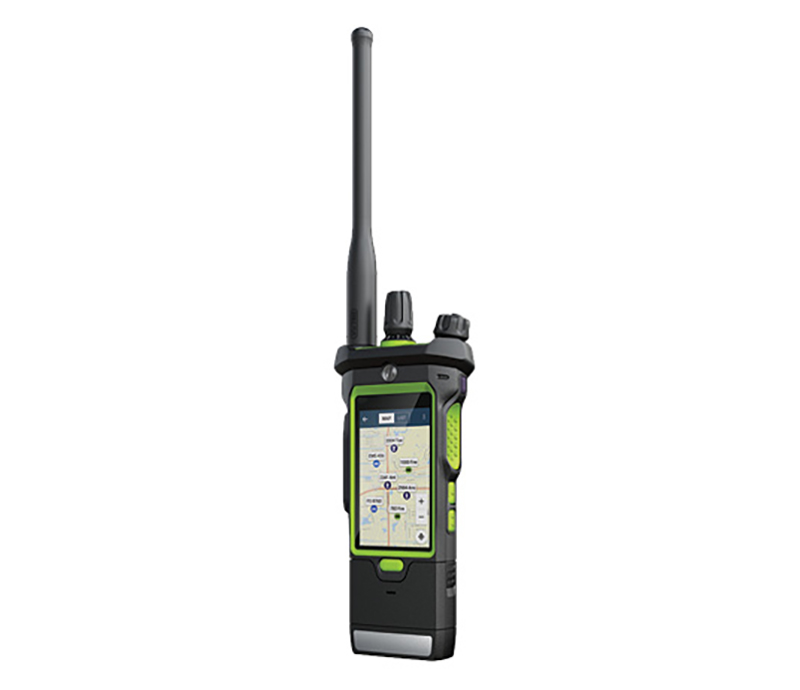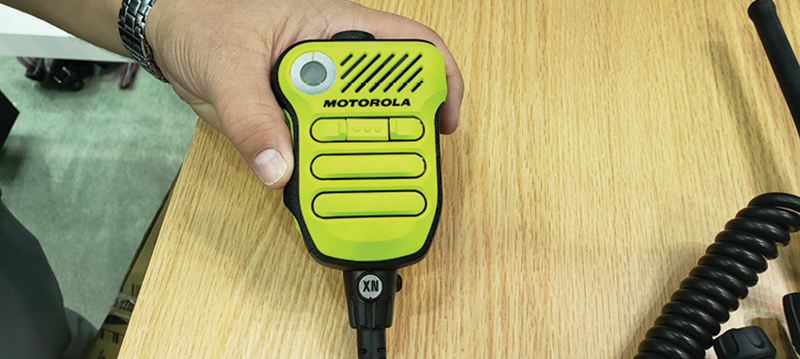By Raul Angulo
Radio communications are probably the least exciting component of fireground strategy and tactics, yet without them we cannot operate efficiently and safely.
In fact, in a modern society, without radio communications it is unlikely that we could perform any emergency operations at all. Radio communications are used extensively in size-up, making assignments, reporting progress or delays in carrying out those assignments, reporting changing fireground conditions, and maintaining firefighter accountability.
Most importantly, radio communications are our invisible lifeline to safety, especially when a Mayday is called for a trapped or down firefighter. This is when your life literally depends on the reliability of your portable radio.
Another area that heavily depends on the reliability of portable radio communications is in high-rise firefighting. Depending on how much concrete and steel is used in a building of Type I fire-resistive construction, firefighters may lose the ability to communicate when operating deep inside the building or in below-grade levels. An 800 MHz signal from a repeater can effectively be blocked. A “bonk” tone occurs when the transmit button is depressed, preventing all communications from being sent or received. Task assignments can be missed; situation updates can’t be reported; and, most importantly, you cannot call a Mayday for help. You are on your own.
Our current solution is to switch to a simplex channel (radio-to-radio) or physically move to a perimeter window within the high-rise building to establish line-of-sight communications with the command post or move to where the portable radio can once again connect to the repeater and reestablish normal communications. However, this solution is not always reliable or possible.
A SOLUTION TO THE PROBLEM
Well, these problems have been mitigated by Motorola Solutions with the introduction of the APX NEXT XN portable radio and XVN500 Remote Speaker Microphone (RSM). Launched in December 2022, it is Motorola Solutions most rugged portable radio for the fire service to date.
This smart radio is an all-band radio. It can be used with 800 MHz, 700 MHz, UHF, VHF, broadband, and Wi-Fi networks. It has voice-roam LTE (Long-Term Evolution) capability with FirstNet AT&T and Verizon networks as well as Bell Mobility in Canada. LTE is a standard for wireless data transmissions and is sometimes referred to as 4G LTE. Equipped with Smart Connect, the radio detects when a land mobile radio signal is low or lost and automatically switches to LTE connectivity, ensuring the continuity of voice communications.
For example, the 800 MHz system or whatever designated fire frequency normally is used always takes priority, and the ability to switch to a simplex channel remains a viable option. But if the 800 MHz signal is weak, intermittent, or lost completely, as in a dead zone, the smart radio will roam to the agency’s carrier network (FirstNet AT&T, Verizon, or in Canada Bell Mobility) and will automatically switch over without the firefighter having to manually change channels or manipulate the radio.
The smart radio can also roam to a Wi-Fi network and continue to transmit and receive messages if provisioned on the network or connected to a mobile Wi-Fi hotspot. The quality of communication remains the same. The radio indicates that SoundConnect is active by showing blue bars on the top display panel as well as on the larger touch screen on the front of the radio. It also uses a different talk-permit tone, which alerts the firefighter that the radio has switched to an alternative network. Again, it’s done automatically and seamlessly without the firefighter doing anything.

1 The APX NEXT XN smart radio is an all-band radio that uses 800 MHz, UHF, VHF, Verizon, and FirstNet LTE broadband and other Wi-Fi networks. The radio prioritizes which network system is strongest and automatically connects for continuous communications. (Photos 1 and 2 courtesy of Motorola Solutions.)

2 The touch screen on the APX NEXT XN can project interactive mapping, which can show firefighter locations, multimedia smart messaging, and GPS location information.

3 The XVN500 Remote Speaker Microphone (RSM) with ViQi voice control features enables the firefighter to control the radio through simple voice commands. Leading audio quality can be heard over the loudest fireground environments. The RMS has an S.O.S. strobe, which activates when the emergency button is pushed. It can also be turned on for a solid beam flashlight. (Photos 3 and 4 by author.)

4 An emergency button is on the radio unit as well as on the RSM unit. The APX NEXT XN portable radio and XVN500 Remote Speaker Microphone are certified to NFPA 1802.
In addition to broadband capability, the APX NEXT XN radio touch screen also includes the ability to project interactive maps with firefighter locations (SmartMapping), multimedia messaging (SmartMessaging), and GPS location (SmartLocate) information that updates every few seconds to enhance accuracy and firefighter safety. Other features include data logs, self-checks and self-diagnostics, audible and visual alerts, and leading audio to hear and be heard over the loudest fireground environments.
The ViQi voice control feature enables the firefighter to control the radio through simple and intuitive voice commands.
NFPA 1802
The APX NEXT XN portable smart radio and XVN500 Remote Speaker Microphone have been tested for ruggedness, heat resistance, and water resistance and meet all the requirements for National Fire Protection Association (NFPA) 1802, Standard on Two-Way Portable RF Voice Communications Devices for Use by Emergency Services Personnel in the Hazard Zone. The device was exposed to direct flame contact for 10 seconds, subjected to the temperature of 500°F (260°C) for five minutes, submerged in water, and dropped from a height of 9.8 ft. (3m).
There are other features as well. This is not just another portable radio with fancy bells and whistles. This radio, with the reliability of the smart technology claimed by Motorola Solutions, can be a real game changer in fireground communications, firefighter accountability, and firefighter safety and survival. At minimum, it is worth checking out.
RAUL A. ANGULO is a captain (ret.) of Seattle (WA) Fire Department Ladder Co. 6 . He has more than 40 years of experience and is on the editorial advisory board for Fire Apparatus & Emergency Equipment. He is the author of the new textbook Engine Company Fireground Operations 4th Edition (Jones and Bartlett Learning) and has been teaching at FDIC International since 1996.

